Travel Notes on Free Travel in Yunnan-Kunming
I went to Kunming to attend an academic conference. The conference ended, coinciding with the weekend, and I spent two days in Kunming.
After flying to Kunming, we first visit the Yunnan Province Museum. The Yunnan Province Museum is opposite to the Yunnan Province Grand Theater, adjacent to the Yunnan Literature and Art Museum, and facing Guandu Ancient Town.
The picture below shows the Yunnan Province Museum.

The picture below shows the statue of the roc golden-winged bird in front of the Yunnan Province Museum.

The picture below shows the Yunnan Province Grand Theater.

The picture below shows the Yunnan Literature and Art Museum.

The exhibition content of the Yunnan Province Museum is very cultural, from ancient Yunnan (Fossil remains showing geological changes and biological evolution in Yunnan in ancient times), Light of Civilization (In Yunnan during the Bronze Age, bronzes in Yunnan had local and ethnic characteristics), Nanzhong ruled the country (Yunnan during the Wei, Jin, Southern and Northern Dynasties was infiltrated by Han culture and dominated the area), opened up borders and guarded the border (Yunnan during the Yuan, Ming and Qing Dynasties, the Yuan destroyed Dali State, the Ming unified Yunnan, and the Qing Dynasty changed its territory to the flow), Miaoxiang Buddha State (Yunnan during the Nanzhao and Dali States), a century of fame (Yunnan in the modern era, in modern history, Yunnan played an important role in China's historical process)
Geographically, Yunnan is located on the border. Historically, Yunnan is far from the center of Chinese history. During the three periods of the Yuan, Ming and Qing Dynasties, with the large number of foreign ethnic groups such as Han, Mongolian and Manchu immigration, the multi-ethnic integration pattern of "Han more than Yi" in Yunnan today was formed. Famous figures in history, Zheng He and Nie Er, were both from Yunnan.
The Yunnan Province Museum displays the historical relics of the ancient Dian Kingdom, Nanzhao Kingdom, and Dali Kingdom, as well as many modern historical relics. The exhibits are displayed in chronological order, and there are many high-quality products among them. The three national treasures displayed in the National Treasures are all on display, the Four-Ox Gilded Knight Shell Storage, the Copper-Gilded Golden-Winged Bird with Beads, and the Nie Er Violin.
The picture below shows the four-oxen gold-plated knight shellfish storage vessel, the copper-plated golden-winged bird inlaid with beads, and the Nie Er violin.



When we visited, the museum was holding an exhibition called "Mucha-Pioneer of Art Nouveau". Mucha was a painter, decorative artist and representative of the Art Nouveau movement in the Czech Republic. The works in the exhibition are highly appreciated, and the cultural and creative products sold in the exhibition are worth collecting, especially the 3D postcards that are lifelike and ready to be seen.
The next two pictures show the "Muxia-Pioneer of Art Nouveau" exhibition.


The picture below shows the bronze statue of the Yunnan Province Museum.

Exit the museum and walk to Guandu Ancient Town. The museum is located at the southwest corner of the intersection, Guandu Ancient Town is located at the northeast corner of the intersection, and Yunnan Literature and Art Museum is located at the southeast corner of the intersection.
The picture below shows the south gate archway of Guandu Ancient Town.

The picture below shows the streets of Guandu Ancient Town.



The picture below is a tour of Guandu Ancient Town. The entrance on the right is the South Gate Archway. Our travel route is basically to follow the red line marked on the map, enter from the South Gate Archway, stroll along Jiuzhuanhua Street, visit the Fa Shi Temple, Tuzhu Temple, Jingang Throne Tower, Ancient Stage, Miaozhan Temple Twin Towers and Miaozhan Temple, leave the scenic area to the Xinbaoxiang River, and take a bus back to the hotel.

Guandu Ancient Town is located in the southeastern suburbs of Kunming. It is one of the famous historical and cultural ancient towns in Kunming. Guandu was once an ancient ferry in central Yunnan in history. During the Tang and Song Dynasties, it was already a large market town on the east and Kunming bank of Dianchi Lake. Counties were established at the same time in the Yuan Dynasty and Kunming. In the Ming and Qing Dynasties, it became a township with developed commerce and handicrafts. In the past, Guandu was home to merchants and many temples. There are no traces of ferries in Guandu Ancient Town. On the small square in front of the Jingang Tower, there is a sailboat sculpture located in a small beach of water, which seems to remind the memory of the past.
Walking along the streets of Guandu Ancient Town, I feel that it is a little different from other ancient towns. Guandu Ancient Town is not only a place to buy specialties and specialty catering like other ancient towns, but also has many cultural monuments and rich cultural landscapes. There are many ancient temples and ancient buildings with exquisite architecture. These ancient temples and historical buildings are very distinctive. This is probably the unique characteristics of Guandu Ancient Town that distinguishes it from other ancient towns.
All attractions in Guandu Ancient Town are visited for free, and tourists can take their own tourist maps at the visitor center at the entrance.
The earliest temples built in Guandu were the Tuzhu Temple built in the Nanzhao period of the Tang Dynasty and dedicated to Mahajara (the Great Black Celestial God), and the Legal Temple built in the Dali Dynasty of the Song Dynasty. The eaves of the Mingjian Temple are decorated with open carvings of double phoenixes and sunrise, the top of the eaves columns is decorated with wooden unicorns, and the heads of the four corner beams are carved into the shape of phoenixes. The shape is vivid and has the style of Song Dynasty architecture and is of great ornamental value. The architecture of Yunnan temples may be related to the Dali Kingdom's worship of phoenixes. The temple buildings have many sculptures of phoenixes, and the golden-winged phoenixes are also a collection of the Yunnan Province Museum.




Miaozhan Temple, the "first of the six temples" in Guandu, was built in the 27th year of the Yuan Dynasty (1290). Two 13-story solid square brick towers with dense eaves were built outside the gate of the temple in the east and west. The west tower was destroyed in 1833 by an earthquake. The west tower was rebuilt in 1999, and the east tower is the original. At night, the twin towers will be illuminated by lights and can be clearly seen as far as the southern tip of Dianchi Lake. What is puzzling is that the plaque on the gate of Miaozhan Temple now says "Shaolin Temple", and the plaque of "Miaozhan Temple" is located behind it."Miaozhan Temple" cannot be seen from a distance, but only "Shaolin Temple". At a close look, I can see the plaque of "Miaozhan Temple" hidden behind it, but for some reason I cannot understand it.


The picture below shows the twin towers in front of Miaozhan Temple.

The picture below shows the Coiling Dragon Pillar and Phoenix Bird Eaves in Miaozhan Temple.


Enjoy the Coiling Dragon Pillar and Phoenix Eaves from multiple angles. The style is very exquisite. This architectural style has not been seen anywhere else in the country.





In addition to the twin towers in front of the Miaozhan Temple, there are also ancient stage and King Kong Throne Tower built in the Ming Dynasty. The Jingang Throne Tower is the core of the ancient building complex in Guandu Town. The Jingang Throne Tower was built by Mu Lin, the commander of Yunnan guarding General Guard, by Doctor Rong Lu, and funded by Luo Gui, the eunuch guarding Yunnan, when Miaozhan Temple was rebuilt in the second year of tomorrow Shun (1457). Among the more than ten existing King Kong pagodas in my country, the King Kong Pagoda of Miaozhan Temple is the oldest one built and the oldest one. It is also the only pagoda built entirely of sand and stone.
The picture below shows the King Kong Throne Tower.

The picture below shows the ancient stage.

Guandu Ancient Town is worth spending half a day looking at it slowly and carefully. Although there are many monasteries, there are no forced pilgrimage. The Buddhist realm is very quiet and peaceful.
Visit the Western Hills the next day. Xishan Mountain is located on the west bank of Dianchi Lake, also known as Biji Mountain. The hotel I stayed in is located on the edge of Dianchi Lake, not far from the Dianchi Cableway Station. There is a cableway ticket sales station and a special bus to pick up and drop off the cableway entrance outside the hotel. Therefore, I chose to take the cableway from the Dianchi Lake to the West Mountain. The cableway ticket is 40 yuan one way and 70 yuan round trip. Take the cableway up to Xuguang Pavilion and buy tickets for Longmen Scenic Area here. The Xishan Scenic Area is free, and tickets are required for the Longmen Scenic Area in the scenic area. Tickets for Longmen Scenic Area are 30 yuan, transportation (cableway + transportation) are 35 yuan, insurance is 2 yuan, and tickets for people over 60 years old are half price and cash is required.
The picture below shows the cableway across the western mountains on the edge of Dianchi Lake.

The picture below shows Xuguang Pavilion.

There are many service personnel at the exit of the ropeway station who enthusiastically provide tourists with consultation and guidance on routes, ticket purchase and other issues. Yunnan's tourism organization is relatively in place. After purchasing your tickets, you will reach the entrance of Longmen Scenic Area on your way forward. Nie Er's tomb is located on the right side of the entrance of Longmen Scenic Area. It is estimated that it will be down from the mountain until afternoon, so visit Nie Er's tomb first.
Nie Er was born in Kunming in 1912. He drowned while swimming in Japan in 1935 and was relocated to his burial here in 1980. Nie Er is the composer of the national anthem of the People's Republic of China. A national anthem undisputed established Nie Er's title as "People's Musician."
In front of the zither shaped Nie Er tomb stands a white granite statue of Nie Er, and on the left is the Nie Er Memorial Hall.


The inkstone tombstone of Nie Er's tomb is engraved with Guo Moruo's book "The Tomb of Nie Er, the People's Musician", and the back of the tombstone is an epitaph inscribed by Guo Moruo.


The eulogy written by Tian Han is engraved on the retaining wall behind Nie Er's tomb. The embossed on the retaining wall expresses the meaning of the lyrics of the national anthem, symbolizing the Chinese people's unyielding spirit and bravely advancing despite the enemy's artillery fire. The steps, flower beds, tombstones, etc. of Nie Er's tomb are all grouped in groups of 7, symbolizing 7 musical scales.


Enter the Longmen Scenic Area and take the cableway up the mountain at the entrance of the scenic area. Walk and climb the mountain from the cableway station to Lingxu Pavilion at the peak of the West Mountain, overlooking Dianchi Lake. Go down from Lingxu Pavilion and return to the cableway station, walk down. Attractions along the way include Yaopin Pavilion, Yingwen, Haoran Pavilion, Longmen, Fenghuang Rock, Xiaoniuquan, Yuhuang Pavilion, Holy Parents Hall, Zhenwu Hall, Lingguan Hall, etc.


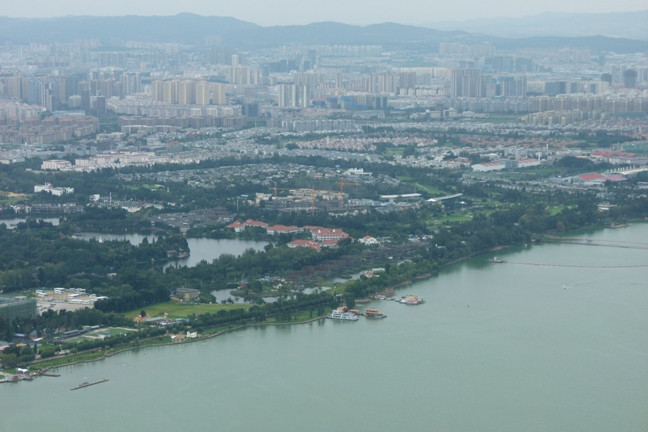
Lingxu Pavilion at the peak of the West Mountain overlooks the endless Dianchi Lake. When we came in 2004, the water in Dianchi Lake was dark green and seriously polluted. After years of management, the water quality of Dianchi Lake has improved, but it is still not ideal.


Longmen is a stone carving project dug on the cliff of Guabang Mountain in the Qing Dynasty, from Sanqing Pavilion in the West Mountain to Datian Pavilion on the top of the mountain. It includes sculptures such as stone roads, ancient rooms, ancient railings, ancient caves, and ancient Buddhas. It is the essence of the scenic scenery of the West Mountain.
It is said that during the reign of Emperor Yang of the Sui Dynasty, Yunnan did not have a "top scholar" for thousands of years. It is said among scholars in the Confucian community that there is no Longmen Gate on Guabang Mountain. Whenever a Longmen Gate is carved out of a cliff, someone in Yunnan will jump to the Longmen Gate and be awarded the gold medal. So a young stonemason in the fishing village at the foot of Guabang Mountain and the girl he fell in love with each other made the ambition of "Yu digging the Dragon Gate" and decided to dig the Dragon Gate before getting married. The Confucian scholars helped each other. The young stonemason and his partners finally broke through Yunhua Cave and dug out the Longmen Datian Pavilion. Longmen's Datian Pavilion is in the center, and Wensheng and Guan Sheng are on both sides.



Touch the dragon pearl on the dragon gate with your left hand at the Datiangge in Longmen, which means that the fish jumps over the dragon gate, auspicious and healthy.

The stone wall passage of the Dragon Gate.
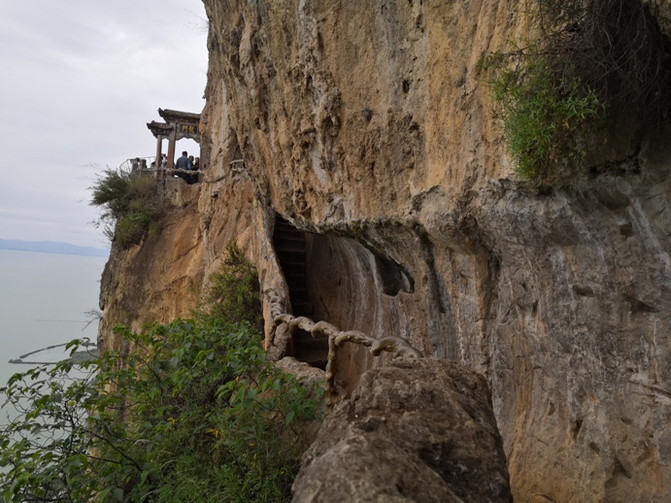
Touch Xuanwu outside Zhenwu Hall. To touch Xuanwu, you must first touch the snake body from beginning to end to get its meaning of "length", and then touch the head of the turtle to get its meaning of "longevity"."Longevity" is people's good expectation.

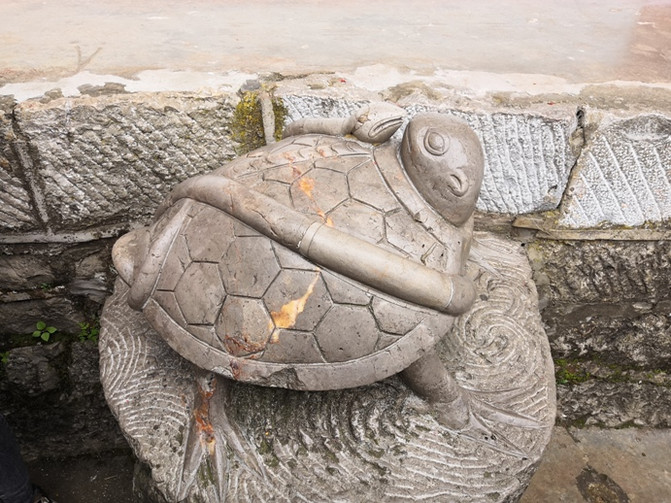
The picture below shows Phoenix Rock.

The picture below shows Xiao Niuquan.


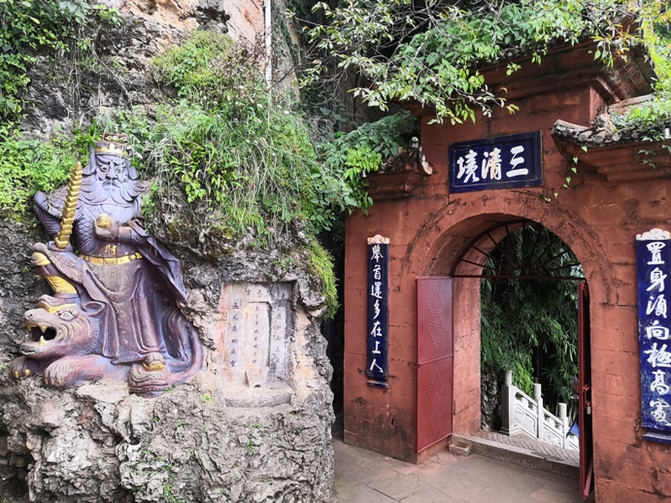
The price for dining in Xishan is reasonable. Lunch with bamboo tube rice and lotus leaf chicken are delicious and cheap. It is available for 18 yuan.

Take the battery car to the exit of Longmen Scenic Area, walk down the mountain, and visit Taihua Temple and Huating Temple along the way. These are two temples worth seeing.
Taihua Temple, built in the Yuan Dynasty, is also known as the "Foyan Temple". The next two pictures show the gate of Taihua Temple.

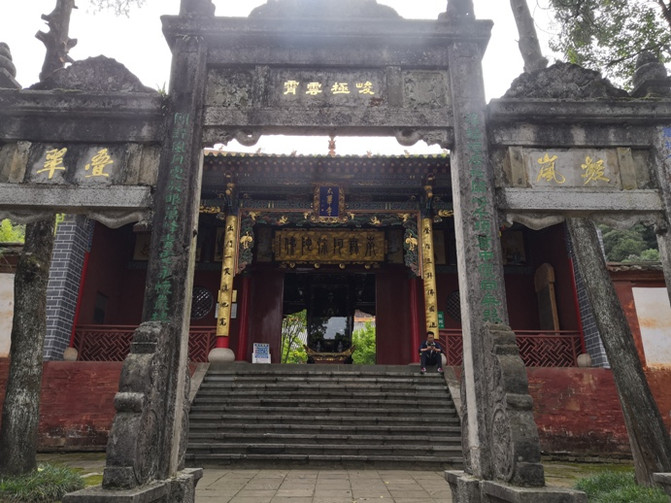

The picture below shows the ginkgo tree hand-planted by Emperor Jianwen in front of the mountain gate.

Taihua Temple and Huating Temple are connected by the "Taihua Ancient Road". The mountain road with stone steps is spacious and flat. During the walk, the air is fresh and peaceful. The picture below shows the Taihua Ancient Road.

The picture below shows the brick carving on the wall near the Taihua Temple Mountain Gate.
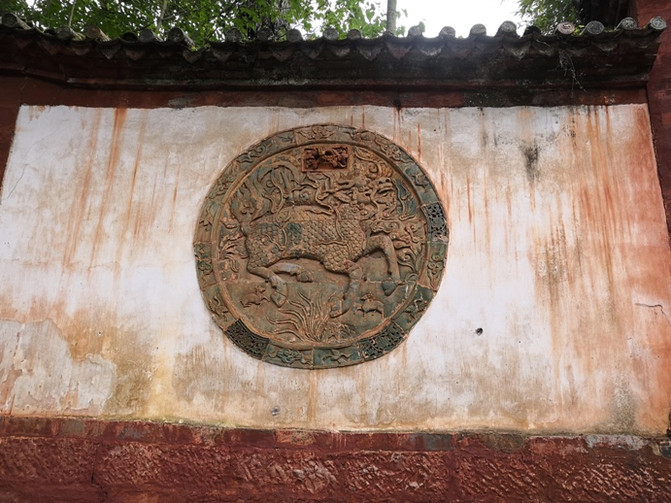
Huating Temple, built in the Tang Dynasty, was formerly known as Dayuanjue Temple and then called Yasukuni Yunqi Zen Temple. It is the largest Buddhist temple in Kunming.
The picture below shows the gate of Huating Temple.

The picture below shows the Daxiong Hall of Huating Temple.

Count arhats in Huating Temple Arhat Hall.
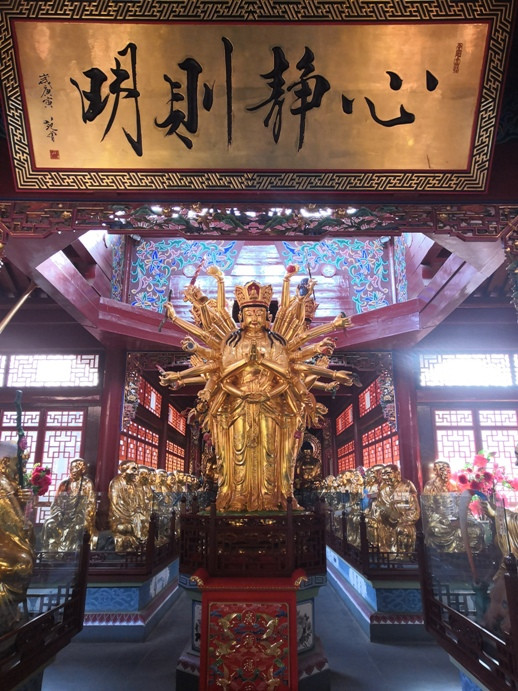

Huating Temple.


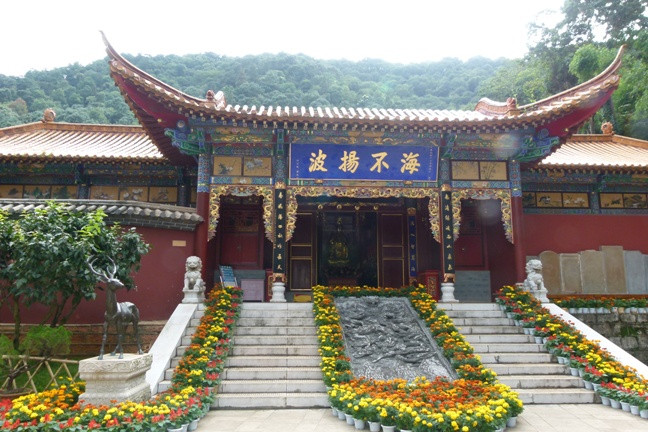
The picture below shows Chamahua Street at the exit of the scenic spot.

The picture below shows the Nanyang Overseas Chinese Mechanical Workers Anti-Japanese Monument in the scenic area.

Beautiful mountain flowers in the scenic area.
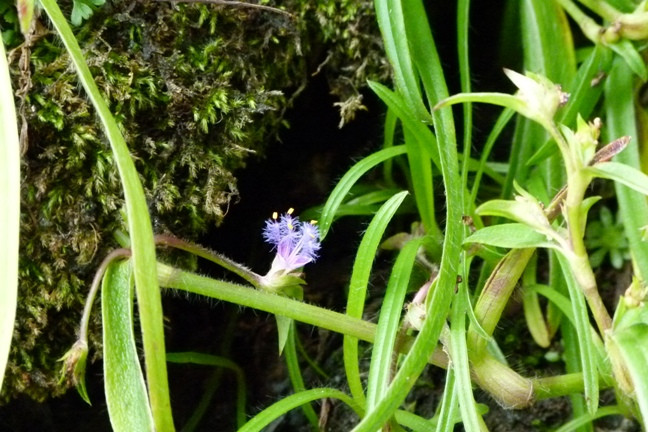

At 17:35, leave the Xishan Scenic Area from the north gate of the scenic area and take Bus No. 94 back to the hotel. Pick up your luggage, take Bus No. 42 to Kunming Station, and check into Jinjiang Hotel. Jinjiang Hotel is the departure point of the airport bus to prepare for the airport the next day. Taxi drivers in Kunming also refuse passengers. The direction to Kunming Railway Station is congested and the distance is not as good as the airport, so taxi drivers refuse to pick them up.
For dinner, try wild mushroom crossing the bridge rice noodles at Dianfu Garden. The set meal for two is 99 yuan. The set meal for two is a little more for two.
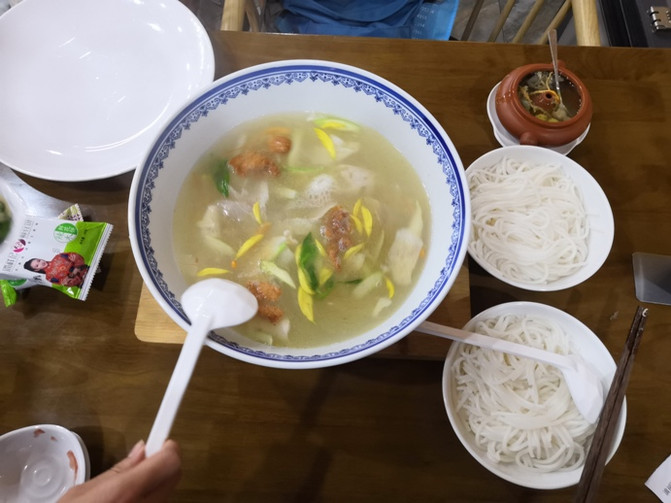

Through personal practice, I recommend Xishan travel strategies. Congshan Scenic Area North Gate (It can be reached by subway and multiple buses) Take the scenic area bus up, or take the cableway up from the sea stem along the Dianchi Lake to the entrance of Longmen Scenic Area; take the cableway from the entrance of Longmen Scenic Area to the station on the mountain, and walk to Lingxu Pavilion, the highest point of the Xishan Mountain, overlooking Dianchi Lake; Walk down and return to the station of the cableway on the mountain; walk down to visit Longmen, Fenghuang Rock and other scenic spots; take a battery car back to the entrance of Longmen Scenic Area; leave Longmen Scenic Area, walk down the mountain, and visit Taihua Temple and Huating Temple along the way; Walk to Chamahua Street at the north gate of the scenic area and exit from the north gate of the scenic area. You can also take a bus down from the entrance of Longmen Scenic Area, get off at Taihua Temple and Huating Temple for sightseeing, and then continue to take a bus and continue to go down to the north gate of the scenic area.
It takes at least a whole day to visit the Xishan Scenic Area, otherwise it may be too rushed. The management of the Xishan Scenic Area is very orderly. Many staff members will provide you with advice on tour route planning. The catering prices in the scenic area are reasonable.
On the third day, we visited the former site of Southwest Associated University.
The former site of Southwest Associated University is located on the campus of Yunnan Normal University. It is free to visit. It is closed on Mondays and is open all year round, from 9:00 to 16:30. At the end of Southwest Associated University, it left the teachers of the Normal University and the site of the United Nations University to Yunnan, and independently established Kunming Normal University. Kunming Normal University was renamed Yunnan Normal University in 1984.
The former site of Southwest Associated University has contents such as the Southwest Associated University Museum, the 12.1 Movement Memorial Hall, the United University School Building, the Southwest Associated University Monument, the Martyrs Monument, and Wen Yiduo's clothes and clothes.
The picture below shows the gate of Yunnan Normal University.

The picture below shows the statue of Mr. Wen Yiduo on campus.

The picture below shows the rebuilt Southwest Associated University school gate.

The picture below shows the Southwest Associated University Museum.




The next two pictures show the Southwest Associated University Monument, which was replicated by Peking University, Tsinghua University and Nankai University and erected on their respective campuses.


The picture below shows the monument to Kunming Normal University.

Southwest Associated University was established in 1938 from Peking University, Tsinghua University and Nankai University to Kunming. It was announced in May 1946, and the three universities were demobilized and returned to the north. After the outbreak of the Anti-Japanese War, the three universities moved to Changsha in 1937 to form Changsha Provisional University. After the fall of Nanjing and Shanghai, Wuhan shook, and Changsha was in crisis. Changsha moved to Kunming in the west, and Southwest Associated University was established. Southwest Associated University has always carried forward the fine tradition of "patriotism, democracy, and science". With its resolute and firm school motto, under extremely difficult conditions, it has built its roots, united sincerely, and continued to sing songs to cultivate talents and cultivate talents for the country. A large number of top talents.


The picture below shows Mr. Wen Yiduo's clothes and clothes.
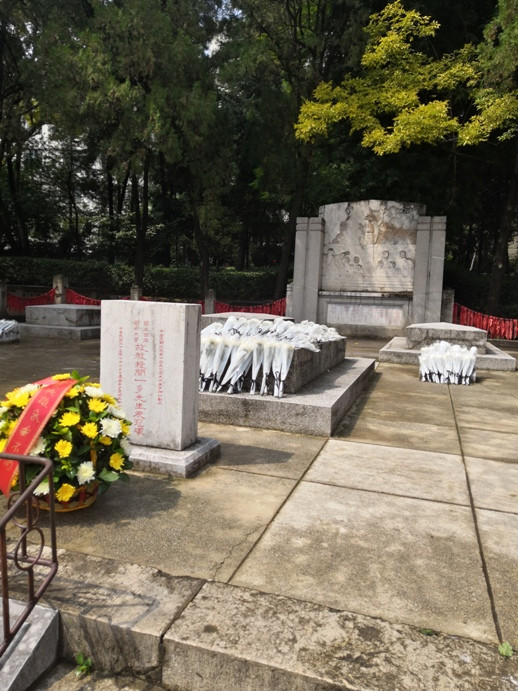
The next two pictures show the monument and memorial pavilion commemorating the 50th anniversary of Southwest Associated University. The monument and memorial pavilion are both triangular in shape, and three memorial pavilions have been built to commemorate the history of the joint construction of Southwest Associated University by Peking University, Tsinghua University and Nankai University.


Sculptures on campus.
Kunming has been here several times, and other scenic spots have been visited before. The Yunnan Province Museum, Guandu Ancient Town, and the former site of Southwest United University are newly built or developed attractions in recent years.
Previous Article:Kunming may be a place that always makes me feel new
Next Article:Can red tourism be played like this? The Red Manor is not only "popular", but also has 4 reasons why it has to come
